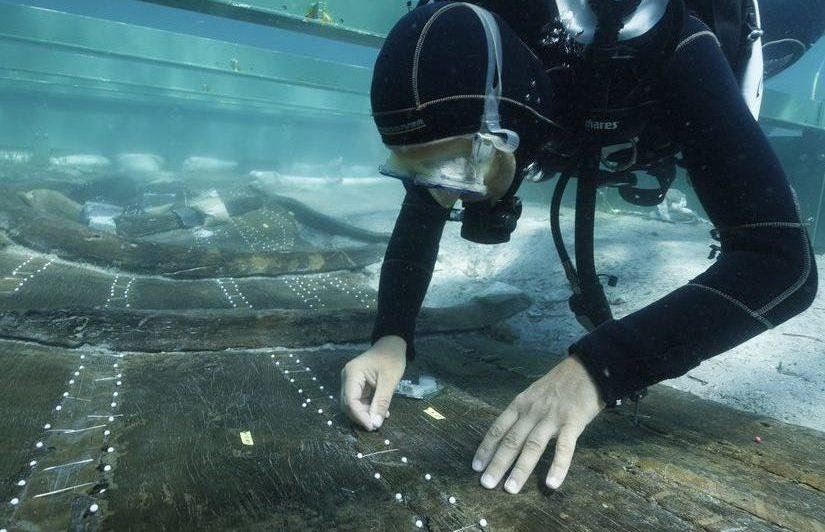The oldest entirely hand-sewn boat in the Mediterranean, known as the Zambratija, is set for a new chapter in its long history. The vessel, which has rested undisturbed on Croatia’s Adriatic seafloor for millennia, will embark on a land journey to France for preservation and further study. The boat was discovered in the Bay of Zambratija near Umag on Croatia’s Istrian peninsula.

According to AFP, archaeologists, led by underwater archaeologist Ida Koncani Uhac of the Archaeological Museum of Istria, have determined that the boat dates back to the late 12th to late 10th century BCE, marking the transition from the Bronze to the Iron Age.
Ida Koncani Uhac expressed the significance of the find, stating, “She is the prototype of all 64 sewn boats discovered in the Mediterranean.”
The story of the Zambratija boat began when a local fisherman alerted archaeologists to the remains of the wooden vessel in 2008. Despite being only 150 meters from the shore, partially visible with one frame and five planks, the boat’s anoxic environment, protected by sea mud, preserved it from deterioration caused by oxygen and harmful bacteria.

Initially believed to be a Roman-era boat, further analysis using radiocarbon dating surprised scientists by dating the boat much further back.
The vessel, sewn together with vegetal fibers ropes, particularly from the Spanish broom (Spartium junceum), is thought to have been a mastless boat for seven to nine rowers. This type of boat, according to Koncani Uhac, may have been used by the Histri, a local tribe after whom Istria was named.
In later centuries, the Histri might have utilized similar boats for piracy in the northern Adriatic, intercepting Roman vessels carrying grain to supply their troops.
The delicate recovery operation of the Zambratija took place in July, involving the extraction of the boat in 15 separate fragments. These fragments were then transported to a museum hangar, where they underwent cleaning, analysis, and tagging before being placed in a specially constructed pool to desalinate.
Monika Petrovic, the restorer involved in the project, noted the meticulous care taken during the conservation process, jokingly referring to the historic find as “our wooden planks.” The fragments are expected to be transported to the Arc-Nucleart research laboratory in Grenoble, France, for the next phase of conservation.
Once the conservation work is complete, the Zambratija will make its final journey home, where it will be displayed to the public. Koncani Uhac said: “First, to have a boat, a vessel, in that period, was certainly a prestige for a tribal community. Furthermore, to build such a boat, if we look back from our perspective to the period 3,200 years ago, it’s a technological achievement in the rank of a spaceship today.”
























